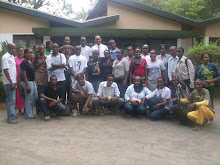Many Literature suggest that, top – down approach have resulted into failure of different wildlife projects, which is the approach that is adopted from the early decade where indigenous were alienated from the resources which are believed to have been supporting their livelihood in a sustainable manner such that patrols were not necessary (Lewis & Carter, 1993)
Human population growth resulted into increase in demands for sustaining man which resulted into increase in human wildlife conflicts as resulted from human social services demand, food, medicine, norms & cultural and land for cultivation and residence.
Due to increase human wildlife conflicts law enforcement have become less practical and cost full and still wildlife populations are subjected to extinction e.g. the black rhino.
For instance long before the creation of the Serengeti National Park in Tanzania, the people of the western Serengeti had established settlements and interacted with the environment in ways that created a landscape we now misconstrue as natural. Western Serengeti peoples imagine the environment not as a pristine wilderness, but as a differentiated social landscape that embodies their history and identity. Conservationist literature has ignored these now-displaced peoples and relegated them to the margins of modern society. Their oral traditions, however, provide the means for seeing the landscape from a new perspective. Moreover, this thought strengthens the case for involving local communities in conservation efforts that will preserve African environments for the future.
It is true that law enforcement have failed in resolving different human – wildlife conflicts including poaching. The use of participation of the local communities in conservation is suggested as a supplement to the short comings of ant – poaching operations. Stakeholder participation was proposed to mitigate threats facing conservation of natural resources but is also believed to have proved failure
To Date, Different community conservation projects were established in different adjacent protected areas including Tarangire National Park and others at the Arusha Anti – poaching Unit areas of operations. However, poaching is believed to have increased compared to before the establishment of Community Conservation projects. A lot of funds are directed to ant – poaching operations and community conservation but still poaching is increasing tremendously. Little is written about the ant – poaching operations and community conservation in relation to their effects in reducing poaching activities and the efforts so far made to reduce these activities comparing to the success achieved.
Wildlife Management Areas (W.M.As) are there to share knowledge with local communities over the importance of a certain resources like wildlife but the way is taken carries a certain elements of Top Down approach. For instance the eviction of local communities at Ngorongoro Conservation Area of Authority, It is true that the area is facing ecological threats caused by human being, but people causing such threats are immigrants who have little knowledge about the area. Eviction will cause hardship to their life and force them to engage in poaching which seem to increase day after day. The only solution is to sit down wherever they are evicted or not share what they have in order to only create the HEART of OWNERSHIP in a new area and WILLINGNESS.
Not only Ngorongoro but most of W.M.As established in Tanzania have proved failure due to ineffective participation of local communities living adjacent to the areas. The way is established makes people feel as new thing which want to make their life harder. This creates a sense of conflicts among them with Wildlife authorities. Effective participation of local means involve them from planning up to implementation will harness the fruits of our W.M.As for the protection of our Wildlife
Elihoise Malisa
hoylus3@yahoo.com
Wednesday, July 29, 2009
Subscribe to:
Post Comments (Atom)


No comments:
Post a Comment